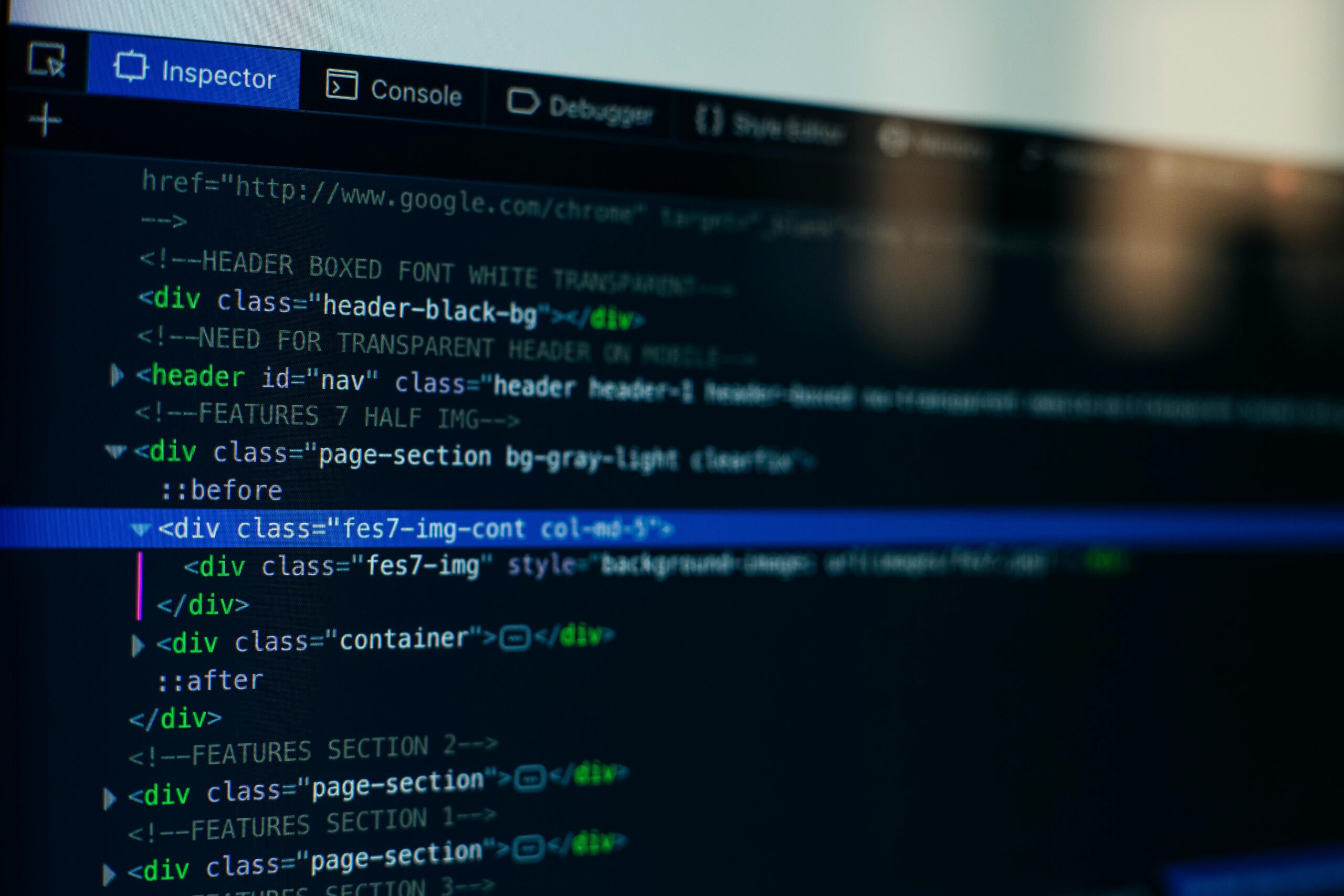Artificial intelligence is reshaping the software development landscape, offering innovative solutions to traditional challenges. From automating routine tasks to improving the quality of code and accelerating project timelines, AI is an indispensable tool for developers and organizations alike. This article explores key use cases of AI in software development, highlighting how it is driving efficiency, precision, and innovation across the industry.

1. AI-Driven Code Review
AI enables developers to conduct code reviews more efficiently by analyzing large codebases for errors, inefficiencies, and deviations from coding standards. This eliminates the need for time-intensive manual inspections, ensuring that every aspect of the codebase is thoroughly examined. AI tools help developers detect potential bugs, security vulnerabilities, and logic errors, providing actionable feedback that enhances software quality and reliability. By automating these reviews, development teams can streamline their workflow and allocate more time to strategic tasks.
Additionally, AI can suggest improvements to code structure and organization, helping maintain consistency across projects. Developers can use these insights to optimize performance, simplify complex functions, and ensure that their code adheres to best practices. The result is cleaner, more maintainable code that reduces technical debt and supports long-term scalability. This approach not only speeds up development but also minimizes costly errors that could arise in production environments.

2. Automated Code Generation
Generative AI simplifies the coding process by creating reusable components such as functions, classes, or database queries based on existing project context. This allows developers to focus on higher-level tasks, delegating repetitive and time-consuming coding to AI. By inputting specific requirements or descriptions, developers can quickly generate boilerplate code, reducing the time needed for initial setup and prototyping. This is particularly useful for creating standardized components in large projects, ensuring consistency across the codebase.
Furthermore, automated code generation supports rapid iteration and experimentation by enabling quick adjustments and refinements. Developers can input changes to project requirements and receive updated code instantly, facilitating a more agile approach to development. This process improves efficiency, reduces errors, and allows teams to deliver software faster while maintaining quality. With AI handling routine coding tasks, developers can direct their expertise toward solving complex problems and innovating solutions.

3. Intelligent Debugging
AI revolutionizes debugging by identifying and prioritizing issues in codebases with unparalleled speed and precision. It scans for errors, inefficiencies, and inconsistencies, offering detailed explanations and recommendations to resolve them. Unlike traditional methods, AI-powered debugging tools can trace intricate execution paths and uncover root causes of issues that might not be immediately apparent to developers. This ensures that even subtle problems are addressed before they escalate into larger concerns.
In addition, AI enhances proactive debugging by predicting where potential bugs might occur based on historical patterns and current code structures. Developers can use this capability to preemptively fix vulnerabilities and optimize code performance. By automating the detection and analysis of bugs, AI reduces the time required for troubleshooting and increases overall software reliability, helping teams maintain high standards and minimize disruptions.

4. Automating Testing and QA
AI improves testing processes by automating the creation of comprehensive test cases and scenarios. Developers can use AI to generate unit tests, simulate edge cases, and perform stress tests more effectively than manual methods. This ensures robust test coverage and reduces the risk of undetected bugs slipping into production. By analyzing the codebase and application behavior, AI can also identify performance bottlenecks and suggest improvements, enhancing overall software quality.
Beyond generating tests, AI streamlines the execution and evaluation of these tests, enabling faster feedback loops. Developers can quickly identify failing cases, understand their causes, and implement fixes. This automation accelerates development timelines and frees up QA teams to focus on more complex and creative testing challenges. By integrating AI into the testing workflow, teams can deliver reliable, high-performing software in shorter cycles.

5. Automated Documentation Creation
AI automates the generation of technical documentation, making it easier for developers to maintain and share knowledge. By analyzing codebases, usage patterns, and project structures, AI can create detailed descriptions of APIs, methods, and workflows. Developers can use these auto-generated documents to ensure that their work is easily understood by collaborators and future maintainers. This eliminates the need for repetitive manual documentation, saving significant time and effort.
Moreover, AI enhances the clarity and accuracy of documentation by providing examples, diagrams, and explanations tailored to specific audiences. Developers can specify the format and level of detail required, and AI will adapt its output accordingly. This ensures that documentation is both user-friendly and comprehensive, supporting smoother collaboration and onboarding within development teams. By automating this process, teams can focus on delivering high-quality software while maintaining excellent documentation practices.
6. Enhancing Deployment Processes
AI facilitates smoother deployments by automating critical aspects of the process, such as determining optimal rollout times and detecting anomalies in real-time. Developers can rely on AI to monitor system behavior, predict traffic patterns, and scale resources accordingly. This ensures that applications remain stable and responsive during updates or high-demand periods. By preemptively addressing potential issues, AI minimizes downtime and user disruptions.
Additionally, AI supports automated rollbacks in case of deployment failures, enabling teams to quickly revert to a stable version without manual intervention. Developers can also use AI to manage configurations and optimize infrastructure settings, streamlining the deployment process from start to finish. This automation reduces errors, accelerates time-to-market, and enhances overall system performance, allowing teams to deliver updates and new features with greater confidence.

7. Proactive Security and Threat Detection
AI enhances security processes by analyzing codebases, network traffic, and system behaviors to detect vulnerabilities and potential threats. Developers can use AI to monitor real-time activities, identify anomalies, and flag suspicious patterns that could indicate security breaches. This proactive approach minimizes the risk of attacks by addressing issues before they escalate. For example, AI can detect unusual login attempts, unauthorized data access, or abnormal traffic patterns, providing developers with immediate insights to mitigate risks.
Furthermore, AI assists in ensuring compliance with industry regulations by reviewing code for adherence to standards such as GDPR or HIPAA. Developers can automate checks for encryption protocols, secure handling of sensitive data, and logging practices. This reduces the likelihood of compliance violations and enhances the overall security posture of applications. By integrating AI into security workflows, development teams can build more robust and resilient software systems.

8. Intelligent Project Planning and Resource Allocation
AI aids in project management by analyzing historical data and providing insights for resource planning and task allocation. Developers can use AI to predict project timelines, estimate resource requirements, and identify potential bottlenecks early in the development process. By leveraging data from previous projects, AI helps teams optimize workflows and improve efficiency, ensuring better alignment with project goals.
Additionally, AI facilitates dynamic adjustments during the project lifecycle by analyzing real-time data and suggesting updates to schedules, budgets, or assigned roles. For instance, if a task is delayed, AI can recommend reallocating resources or adjusting dependencies to minimize overall impact. This adaptability improves project outcomes and helps teams navigate challenges more effectively. By integrating AI into project planning, developers can achieve greater accuracy and efficiency in managing complex software initiatives.

9. Automating Code Refactoring
AI supports developers in refactoring legacy codebases by identifying inefficiencies and suggesting improvements. This includes simplifying overly complex functions, consolidating duplicate logic, and standardizing naming conventions. Developers can rely on AI to analyze the entire codebase, pinpoint areas of technical debt, and recommend changes that improve maintainability and performance.
Refactoring with AI also enhances consistency across projects by ensuring adherence to coding standards and best practices. Developers save time by automating repetitive tasks, such as reorganizing code structures or updating outdated syntax. This process reduces the risk of introducing errors during refactoring and helps teams focus on delivering new features. By leveraging AI for code optimization, developers can maintain cleaner and more efficient codebases, ultimately enhancing software quality.

10. Data Management and Preprocessing
AI simplifies data management tasks by automating processes such as data cleansing, metadata tagging, and lineage tracking. Developers can use AI to remove duplicate records, fill missing values, and standardize formats, ensuring that datasets are accurate and consistent. This improves the quality of data used in applications and analytics, reducing errors caused by poor input.
Additionally, AI accelerates data preparation for machine learning models and other applications by automating annotation and preprocessing tasks. Developers can rely on AI to generate labels, categorize datasets, and detect patterns, streamlining workflows. These capabilities free up time for more strategic activities, such as refining algorithms or optimizing performance. By integrating AI into data management, teams can handle large volumes of information more efficiently and maintain high-quality datasets.
11. Streamlining UI/UX Design with AI
AI enhances UI/UX workflows by automating the creation of design elements, prototypes, and layouts. Developers and designers can use AI to convert text-based descriptions into visual mockups, enabling rapid iteration and experimentation. This approach accelerates the early stages of design, allowing teams to validate concepts and gather feedback more quickly.
AI also facilitates collaboration between developers and designers by translating requirements into actionable design components. Developers can integrate AI-generated prototypes directly into their workflows, reducing the time spent on manual adjustments. By automating repetitive tasks and providing creative suggestions, AI empowers teams to focus on strategic design challenges and deliver user-centered experiences with greater efficiency.

12. Code Translation Across Frameworks and Languages
AI automates the translation of code between programming languages and frameworks, simplifying migration and integration processes. Developers can use AI to convert legacy applications into modern environments without manually rewriting each line of code. This ensures that the original functionality and performance are preserved while adapting to new technologies.
Moreover, AI handles compatibility issues and adjusts dependencies during the translation process, reducing the risk of errors. This allows teams to focus on higher-level architectural decisions rather than tedious conversion tasks. By automating code translation, developers can expand their software’s reach across platforms and frameworks, enabling broader adoption and integration opportunities.
13. AI-Assisted Test Optimization
AI can optimize testing strategies by analyzing historical test data to identify patterns and areas of improvement. Developers can use AI to prioritize high-risk areas of the codebase, ensuring thorough testing of the most critical components. This targeted approach reduces the time and effort required for comprehensive testing while maintaining high standards of quality.
Moreover, AI can automate the selection and execution of test cases, dynamically adjusting based on changes in the code. By focusing on the most impactful tests, developers can achieve better coverage with fewer resources. This level of automation supports continuous integration and delivery pipelines, ensuring reliable software updates without overburdening QA teams.

14. Predictive Maintenance and Performance Monitoring
AI enables predictive maintenance by analyzing historical and real-time data to anticipate potential software failures. Developers can use AI to monitor application performance, detect anomalies, and predict when certain components may require updates or fixes. This proactive approach minimizes downtime and ensures a seamless user experience.
Additionally, AI can identify trends in resource usage, helping teams optimize system performance. For example, it can recommend adjustments to server configurations or scaling strategies based on predicted traffic spikes. This ensures applications run efficiently, even under varying conditions, and reduces the likelihood of costly disruptions.

15. AI-Powered Workflow Automation
AI can automate repetitive workflows in software development, such as managing build processes, merging branches, or resolving merge conflicts. By integrating AI into version control systems, developers can streamline collaboration and minimize manual interventions. This enhances efficiency, especially in large teams working on complex projects.
Furthermore, AI can assist with task management by analyzing project data to recommend deadlines, assign tasks, and track progress. This reduces administrative overhead and ensures that resources are allocated effectively. With AI handling routine tasks, developers can focus on delivering high-value outcomes.

16. Natural Language Code Queries
AI-powered tools allow developers to query their codebase using natural language. For instance, they can ask, “Where is this function used?” or “Which module handles user authentication?” and receive precise answers without manually searching through files. This capability simplifies navigation and enhances understanding of large or unfamiliar codebases.
Additionally, natural language queries improve onboarding for new team members by providing instant insights into project architecture and logic. This accelerates the learning curve and fosters collaboration by making information more accessible to all team members, regardless of their familiarity with the code.
17. AI-Enhanced API Integration
AI simplifies the integration of third-party APIs by automating the process of generating and managing API calls. Developers can describe the desired functionality, and AI generates the required code to interact with the API. This reduces errors and ensures consistent implementation across the application.
Furthermore, AI can monitor API performance and adapt integrations as updates or changes occur. It can automatically detect deprecated endpoints and suggest alternative solutions, ensuring the application remains functional and up-to-date. This streamlines the integration process and reduces the burden on developers.

18. Intelligent Dependency Management
AI can analyze project dependencies and identify potential conflicts or inefficiencies. Developers can use this capability to optimize package management, ensuring compatibility between libraries and frameworks. This reduces the risk of runtime errors caused by outdated or incompatible dependencies.
Additionally, AI can suggest alternative libraries or updates that offer better performance or security. By automating dependency analysis and maintenance, teams can keep their projects secure and efficient without spending excessive time on manual updates.
Conclusion
AI is revolutionizing the software development landscape, offering developers tools to work smarter and more efficiently. From automating code reviews and generating documentation to predicting potential issues and optimizing resource allocation, AI streamlines every stage of the development process. These use cases highlight how AI can reduce repetitive tasks, improve accuracy, and free up time for developers to focus on creative and strategic aspects of their work. By integrating AI into their workflows, teams can deliver higher-quality software faster, enhancing both productivity and innovation.
Looking ahead, the role of AI in software development will likely continue to evolve as tools become more advanced and tailored to specific challenges. While AI already handles many routine tasks effectively, developers remain essential for providing context, creativity, and oversight. As organizations embrace these technologies, they must balance automation with human expertise to ensure ethical, reliable, and impactful software solutions. This synergy between human ingenuity and AI capabilities has the potential to redefine how software is built, tested, and deployed.
